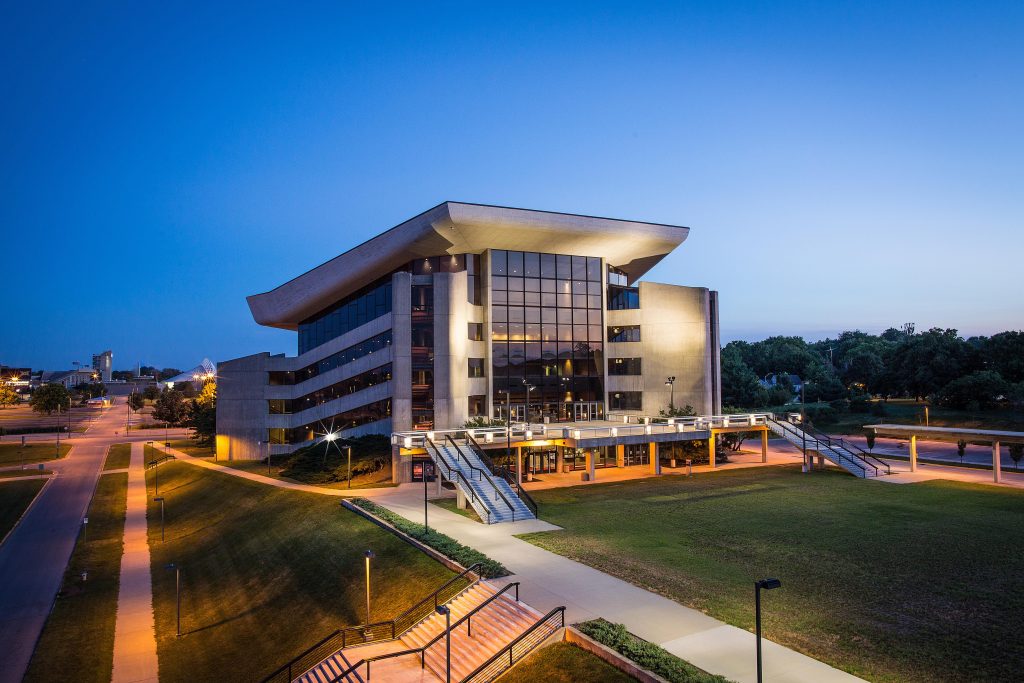Stephens Auditorium played host to one of my first experiences at Iowa State University. When I was 16, I came to Ames with 600 high school singers from all over Iowa for the All-State Music Festival. We rehearsed together for a few days in the cavernous space.
It’s a place that leaves an impression. Three balconies and over 2,600 cardinal seats face a massive stage and a backdrop that looks like it goes up, up, up forever. I remember feeling lucky. How many teenagers got the chance to work in a world-class performance venue like this? How many have even seen one?
Tens of thousands, it turns out, had that opportunity in Iowa. For decades, they’ve come in on Highway 30 to stare wide-eyed at Stephens Auditorium before singing, playing, acting, or otherwise performing in that festival (or one of the many others events it hosts, like Opus Honor Choir or the All-State Large Group Speech Festival).
Tens of thousands of Iowa State students have had these opportunities, too. I took that stage with the Iowa State choirs a couple times every year. It’s the only space on campus big enough for all of the choirs to come together, and it has nine times the capacity of Music Hall’s performance space. When we performed at Stephens with the Iowa State Singers, the novelty of being there might have worn off. But the idea that we had a venue worthy of our university never did, and it never has.

Thousands of experiences like mine are what make Stephens a special place and an iconic landmark of our university. But COVID-19 has put it in jeopardy. As Jamie Pollard laid out in his letter, one of his recommendations for the COVID-caused budget shortfall is to close Stephens Auditorium indefinitely. Pollard further explained this proposal in a tweet, framing the university’s financial support of Stephens Auditorium as a “subsidy of community member’s tickets to performing arts events.”
This explanation misunderstands what Stephens is – what it means to us. It’s a world-class venue for Iowa State student performances. It’s a powerful recruiting tool for the thousands of high schoolers who come to Ames every year to perform. It’s an architectural gem on the front step of campus, having been named Iowa’s Building of the 20th Century by the American Institute of Architects. It’s a place where students can attend performances of nationally-traveling artists, with tickets subsidized by Student Government, only a CyRide trip away.
Like most of us, I don’t know all of the financial challenges the Athletics Department is facing. I’m sure they’re severe, and I trust Pollard to lead his department through them. To do so effectively, the stakeholders in Stephens Auditorium must be included in any conversation – the performers and directors of the Iowa State ensembles, the students who come out to watch the shows, the Iowa high school choral teachers who bring their All-Staters. These are the people who can help university leadership understand that financial support is more than just a “subsidy of community member’s tickets.”
The university should take every possible step it can before the recommendation of closing Stephens is even put on the table for discussion. University leadership needs to work with the City of Ames, the Board of Regents, state legislators, Governor Reynolds, major donors, and anyone else who will listen, and they need to figure it out. We should demand this from our leaders.
Pollard understands the importance of facilities. He’s built Jack Trice Stadium into a venue worthy of a world-class university like ours. He’s improved Hilton Coliseum even more, built a new basketball practice facility, and put together a new Cyclone Sports Complex for other sports. Now, it’s time to prioritize Stephens Auditorium. It’s time to save the performing arts venue worthy of our university.


One response to “Save Stephens Auditorium”
I completely agree. However, everyone who was calling ISU dumb for letting fans into the stadium needs to see the consequences of what that means to go to no fans. I personally hope that Stephen’s gets saved, it’s a beautiful building that should be preserved, but unfortunately, reality doesn’t always work out the way we’d like it to.